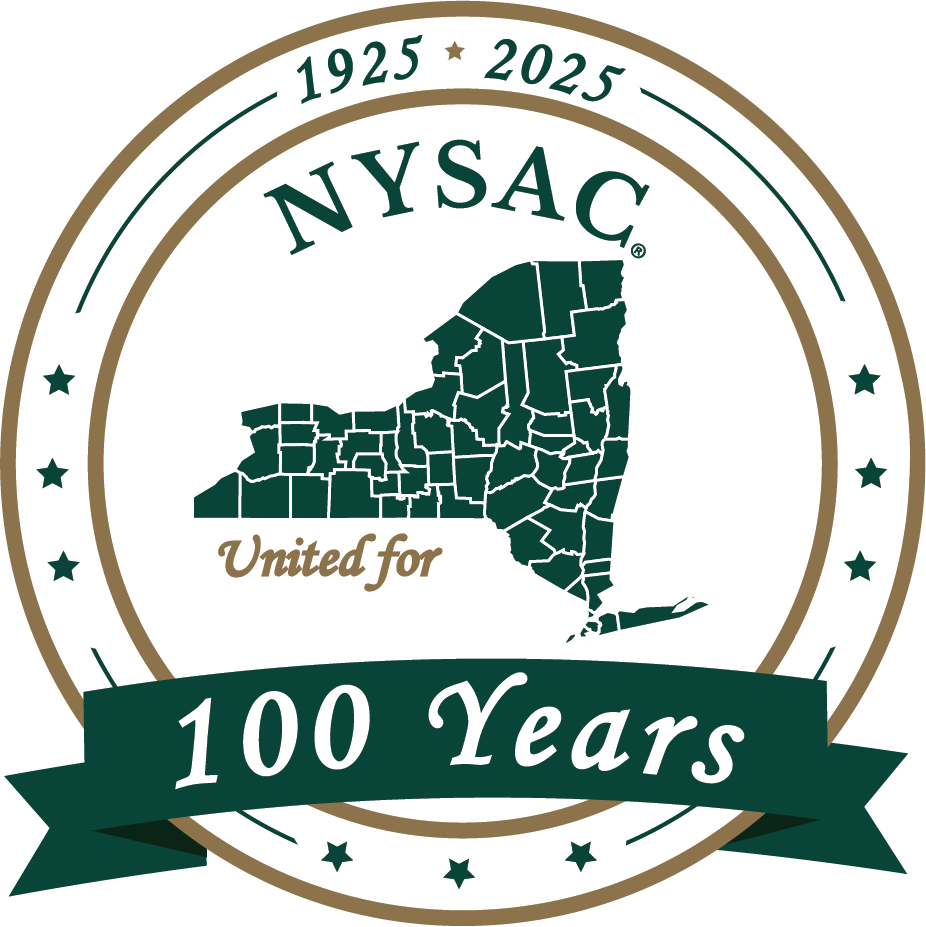Treasury Finalizes State And Local Fiscal Assistance Rule
By Dave Lucas
NYSAC Director of Finance and Intergovernmental Affairs
UPDATED: January 21st
The U.S. Treasury released the final rule for the use of State and Local Fiscal Recovery Funds (SLFRF) provided under the American Rescue Plan Act (ARPA). The new rule is effective April 1, 2022, but any modifications made to the final rule can be implemented immediately as described in the final rule.
NYSAC will continue to work with NACo and our congressional delegation to understand the implications of the final rule. The final rule will allow more flexibility and make it easier for many jurisdictions to utilize these federal recovery funds. County officials should contact NYSAC if they have questions. Several of the changes in the final rule related to revenue loss calculations and more flexible use of funds were included in NYSAC's comments to Treasury on the interim rule.
Some of the important changes include:
Revenue Loss Calculation
The final rule offers a standard allowance for revenue loss of $10 million, allowing recipients to select between a standard amount of revenue loss or complete a full revenue loss calculation. Recipients that select the standard allowance may use that amount – in many cases their full award – for government services, with streamlined reporting requirements. Recipients may determine their revenue loss by choosing between two options:
- A standard allowance of up to $10 million in aggregate, not to exceed their award amount, during the program;
- Calculating their jurisdiction's specific revenue loss each year using Treasury's formula, which compares actual revenue to a counterfactual trend.
- The final rule increases the annual revenue growth factor in the Treasury formula that calculates revenue loss due to COVID from 4.1 percent to 5.2 percent. This change was made to accommodate more recent local government revenue growth data becoming available after the interim rule had been published.
Recipients may use funds up to the amount of revenue loss for government services; generally, services traditionally provided by recipient governments are government services, unless Treasury has stated otherwise.
Public Health and Economic Impacts
In addition to programs and services, the final rule clarifies that recipients can use funds for capital expenditures that support an eligible COVID-19 public health or economic response. For example, recipients may build certain affordable housing, childcare facilities, schools, hospitals, and other projects consistent with final rule requirements.
In addition, the final rule provides an expanded set of households and communities that are presumed to be “impacted” and “disproportionately impacted” by the pandemic, thereby allowing recipients to provide responses to a broad set of households and entities without requiring additional analysis.
Water, Sewer & Broadband Infrastructure
The final rule significantly broadens eligible broadband infrastructure investments to address challenges with broadband access, affordability, and reliability, and adds additional eligible water and sewer infrastructure investments, including a broader range of lead remediation and stormwater management projects.
Capital Expenditures
The final rule clarifies that recipients may use funds for programs, services, and capital expenditures that respond to the public health and negative economic impacts of the pandemic. Any use of funds in this category for a capital expenditure must comply with the capital expenditure requirements, in addition to other standards for uses of funds.
For ease of administration, the final rule identifies types of capital expenditures that Treasury has identified as responding to the pandemic's impacts; these are listed in the applicable subcategory of eligible uses (e.g., public health, assistance to households, etc.). Recipients may also identify other responsive capital expenditures. Similar to other eligible uses in the SLFRF program, no preapproval is required for capital expenditures, but certain reporting requirements must be met for a capital project over $1 million.
Additional Resources
Here are some resources for the Final Rule:
- The Final Rule provides the rule text and supplemental information.
- The Overview of the Final Rule (attached) provides a summary of major rule provisions for informational purposes and is intended as a brief, simplified user guide for recipients and stakeholders.
- The Statement Regarding Compliance with the Coronavirus State and Local Fiscal Recovery Funds Interim Final Rule and Final Rule provides guidance on the transition from compliance with the Interim Final Rule to compliance with the Final Rule.
- The Tool for Determining Low and Moderate Income (LMI) Households provides a spreadsheet to assist recipients in determining income thresholds for the Final Rule's definition of LMI in their jurisdiction and assist with administering the public health and economic response provisions of the Final Rule.
- The Final Rule webinar and slide presentation (attached) provide an introduction and summary of the Final Rule.
Contact Us
New York State Association of Counties
515 Broadway, Suite 402
Albany, NY 12207
Phone: (518) 465-1473
Fax: (518) 465-0506

